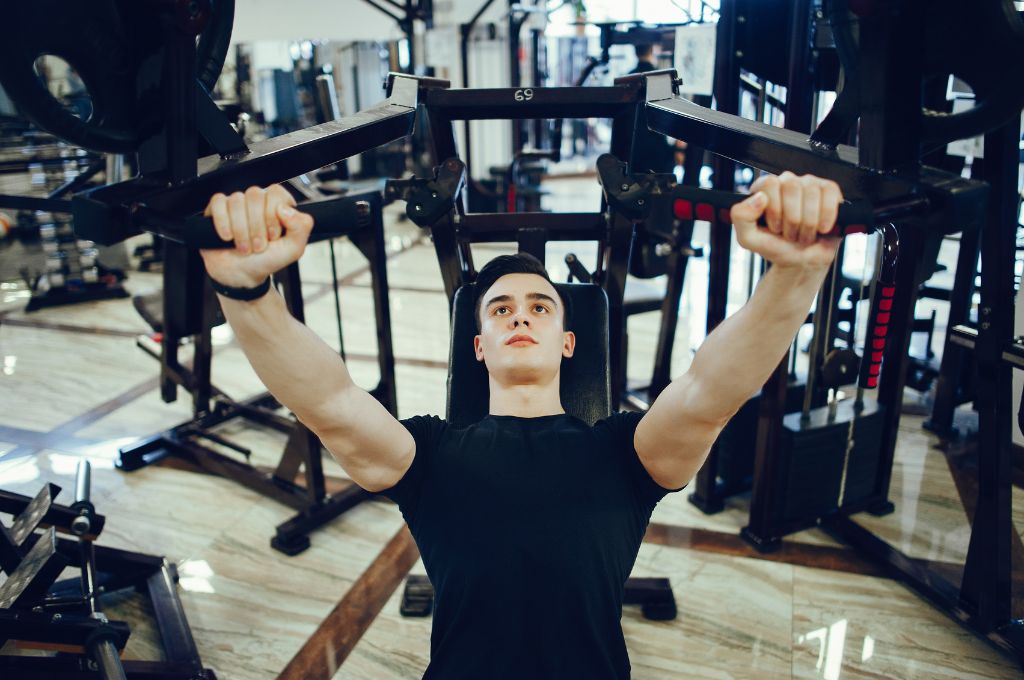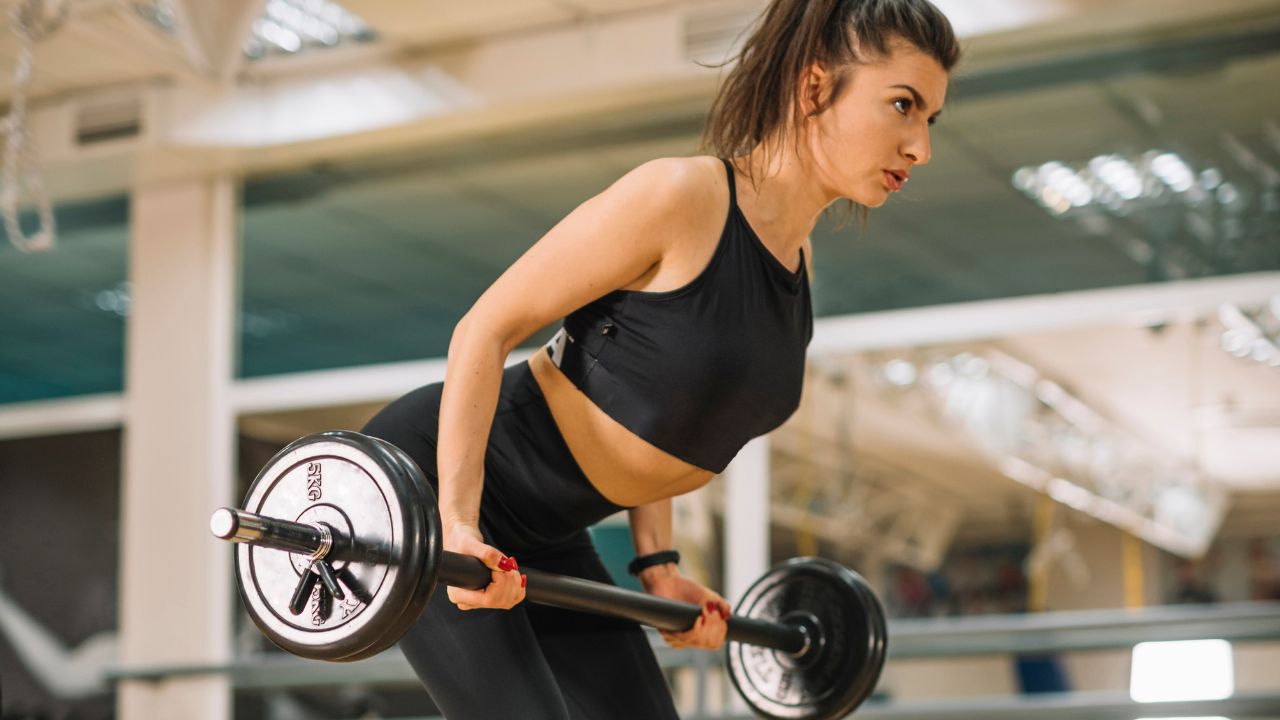Have you ever felt the tremble in your arms as you attempt to bench press? It’s a common phenomenon that leaves many gym-goers puzzled and frustrated. Why do my arms shake when I bench? This question echoes through the minds of countless weightlifters, from beginners to seasoned veterans. In this comprehensive guide, we’ll delve deep into the physiology behind this shaky sensation, uncovering its contributing factors and providing practical solutions to overcome it.
The Anatomy of the Shake
When you hit the bench, your muscles engage in a symphony of activity. The primary muscles involved in the bench press are the pectoralis major, deltoids, and triceps. However, numerous stabilizing muscles also play to maintain control and balance throughout the movement. As you lower the barbell towards your chest, these muscles contract eccentrically to control the descent. Then, during the concentric phase of the lift, they contract forcefully to push the weight back up.
The Role of Muscle Fatigue
Muscle fatigue is one of the leading culprits behind shaky arms during bench presses. As you perform multiple sets and repetitions, your muscles gradually tire out. This fatigue compromises their ability to generate and sustain forces efficiently, resulting in trembling or shaking movements. Additionally, when your muscles reach a point of fatigue, they recruit smaller, less powerful motor units to assist with the lift. This recruitment pattern can lead to instability and trembling, especially towards the end of a challenging set.
The Influence of Form and Technique
Proper form and technique, including the bench press, are paramount in any weightlifting exercise. Poor form not only compromises the effectiveness of the training but also increases the risk of injury. When your form deviates from the optimal path, it places undue stress on specific muscles while underutilizing others. This imbalance can manifest as shaking or trembling in your arms as they struggle to compensate for the lack of stability. Focusing on maintaining a tight grip, solid foot placement, and a stable arch in your back can help minimize shaking and improve overall performance.
The Impact of Mental Focus
The mind-muscle connection plays a crucial role in weightlifting performance. Your mental state and focus can significantly influence the stability and control of your lifts. When you approach the bench press with wavering concentration or doubts about your strength, it can manifest physically as shaky arms. Conversely, when you cultivate a strong mental focus and visualize successful lifts, you enhance neuromuscular coordination and control, reducing the likelihood of shaking. Practicing mindfulness techniques, such as deep breathing and visualization, can help sharpen your focus and quiet the tremors in your arms.
The Effect of Nervous System Activation
The nervous system is the conductor of your muscular symphony during exercise, coordinating the firing of motor units to produce smooth, coordinated movements. However, stress, fatigue, and lack of warm-up can disrupt this orchestration, leading to trembling or shaking in your arms. Adequate warm-up activities, such as dynamic stretching and light resistance exercises, help activate and prime your nervous system for the demands of heavy lifting. By preparing your body and mind for the task, you can minimize the jittery sensations and enhance performance on the bench press.
The Influence of Muscle Imbalances
Muscle imbalances occur when specific muscles are stronger or more developed than their opposing counterparts. In the context of the bench press, imbalances between the pushing muscles (pectorals, deltoids, triceps) and the stabilizing muscles (rotator cuff, serratus anterior) can contribute to shaky arms. When the primary muscles overpower the stabilizers, it creates instability and compensatory movements, leading to trembling during the lift. Incorporating exercises that target the neglected stabilizing muscles can help restore balance and control, reducing the incidence of shaking on the bench press.
The Role of Fatigue and Recovery
In the quest for strength and muscle gains, it’s easy to overlook the importance of adequate rest and recovery. Yet, proper recovery is essential for optimizing performance and minimizing the risk of injury. Overtraining and insufficient rest between workouts can lead to chronic fatigue, impairing muscular function and coordination. As a result, your arms may shake uncontrollably during bench press due to compromised neuromuscular control and depleted energy reserves. Prioritizing rest days, incorporating active recovery strategies, and ensuring adequate sleep are crucial for replenishing your body’s resources and enhancing recovery between workouts.
The Influence of Nutrition and Hydration
Nutrition and hydration play integral roles in supporting optimal athletic performance and recovery. Inadequate fueling and hydration can deplete your muscles and make you prone to shaking during exercise. Proper pre-workout nutrition provides the energy and nutrients necessary to sustain intense efforts and maintain muscular function. Similarly, staying hydrated ensures adequate blood flow and nutrient delivery to working muscles, enhancing their ability to generate force efficiently. Consuming a balanced diet rich in lean proteins, complex carbohydrates, and essential vitamins and minerals, coupled with staying adequately hydrated, can help stabilize your arms and improve performance on the bench press.
The Psychological Aspect of Shaky Arms
The psychological aspect of shaky arms during bench press must be balanced. Fear of failure, self-doubt, and performance anxiety can all contribute to trembling and instability during lifts. These negative emotions create tension and stress in the body, impairing neuromuscular coordination and motor control. The fear of losing weight or injuring oneself can also trigger protective mechanisms, leading to suboptimal movement patterns and shaky arms. Cultivating a positive mindset, setting realistic goals, and embracing failure as part of the learning process can help alleviate psychological barriers and promote confidence and stability on the bench press.
Strategies to Overcome Shaky Arms
Despite the myriad factors that can contribute to shaky arms during bench press, there are several strategies you can employ to overcome this challenge and improve your performance:
- Prioritize proper form and technique, ensuring a stable base and controlled movement throughout the lift.
- Focus on strengthening the stabilizing muscles through targeted exercises and corrective movements.
- Optimize your warm-up routine to activate the nervous system and prepare your body for heavy lifting.
- Cultivate a positive mindset and mental focus, visualizing successful lifts and embracing the journey of improvement.
Listen to Your Body
Your body communicates with you in subtle ways, and shaky arms during bench press may signal fatigue, weakness, or imbalance. Listen to your body and adjust your approach instead of ignoring these signals or pushing through. If you’re experiencing excessive shaking, consider reducing the weight or taking more extended rest periods between sets to allow for adequate recovery. Ignoring these warning signs can lead to injury and hinder your progress in the long run.
Progressive Overload and Adaptation
Progressive overload is a fundamental principle of strength training, involving gradually increasing the demands placed on your muscles over time to stimulate growth and adaptation. However, pushing too hard or fast can overwhelm your body’s ability to adapt, leading to shaky arms and diminished performance. Instead, focus on gradual progression, incrementally increasing the weight or volume of your lifts to give your body time to adjust and strengthen. By respecting your body’s limits and progressing sensibly, you can avoid excessive shaking and continue making steady gains on the bench press.
Incorporating Variations and Accessories
Variety is the spice of life, and the same holds for your workout routine. Incorporating different bench press variations and accessory exercises can help target weak points, improve stability, and reduce shaking. Experiment with incline or decline bench presses, dumbbell presses, or resistance band exercises to challenge your muscles in new ways and enhance overall strength and control. Additionally, incorporating exercises targeting the upper back, shoulders, and core muscles can improve posture and stability, reducing the likelihood of shaky arms during bench press.
Proper Breathing Techniques
Breathing is crucial in weightlifting performance, providing stability and support throughout the lift. Improper breathing patterns can disrupt intra-abdominal pressure and compromise core stability, leading to shaky arms and compromised performance. Focus on synchronizing your breath with the movement, inhaling deeply before lowering the weight and exhaling forcefully as you press it back up. Maintaining a steady breathing rhythm can help maintain tension and control, minimizing shaking and maximizing strength on the bench press.
Addressing Mobility Restrictions

Mobility restrictions in the shoulders, chest, and upper back can hinder your ability to perform the bench press with proper form and control, leading to compensatory movements and shaky arms. Incorporating mobility drills and stretches into your warm-up routine can help improve flexibility and range of motion, allowing for smoother, more fluid movement during the lift. Focus on exercises that target tight muscles and fascia, such as shoulder dislocations, thoracic spine mobilizations, and pec stretches, to alleviate restrictions and reduce shaking on the bench press.
The Importance of Recovery Protocols
In addition to rest days and adequate sleep, implementing targeted recovery protocols can help accelerate muscle recovery and reduce the incidence of shaky arms during bench press. Techniques like foam rolling, massage therapy, and contrast baths can help alleviate muscle soreness, improve circulation, and enhance recovery between workouts. Additionally, incorporating active recovery activities such as walking, swimming, or yoga can promote blood flow and lymphatic drainage, facilitating the removal of metabolic waste products and reducing post-exercise shaking.
Monitoring and Adjusting Training Variables
Practical training requires careful monitoring and adjustment of various variables, including volume, intensity, and frequency. If you consistently experience shaky arms during bench press, it may be a sign that your current training program must adequately address your needs. Consider modifying your training split, adjusting the intensity or volume of your workouts, or incorporating deload weeks to allow for recovery and adaptation. You can optimize your training program and minimize shaking on the bench press by staying attuned to your body’s responses and making appropriate adjustments.
Seeking Professional Guidance
If you’ve tried various strategies to address shaky arms during bench presses without success, seeking guidance from a qualified fitness professional or coach may be beneficial. A knowledgeable trainer can assess your technique, identify weak points or imbalances, and design a customized program to help you overcome this challenge. Additionally, they can provide valuable feedback and support to ensure you’re training safely and effectively, maximizing your potential and minimizing the risk of injury.
Embracing the Journey
Ultimately, mastering the bench press is a marathon, not a sprint. It requires patience, perseverance, and a willingness to learn from successes and setbacks. Instead of viewing shaky arms as a sign of weakness or failure, reframe them as opportunities for growth and improvement. Embrace the process, stay consistent with your training, and celebrate the progress you make along the way. With dedication and determination, you can conquer shaky arms and achieve new heights of strength and performance on the bench press.
The Mind-Muscle Connection
The mind-muscle connection is powerful for enhancing strength, control, and coordination during weightlifting exercises. You can improve neuromuscular activation and reduce shaking on the bench press by consciously engaging and visualizing the target muscles throughout the movement. Focus on forcefully contracting the chest, shoulders, and triceps as you press the weight, maintaining tension and control from start to finish. With practice, you can strengthen the mind-muscle connection and cultivate more excellent stability and precision in your lifts.
Setting Realistic Expectations
Setting realistic expectations for your fitness journey, including the bench press, is essential. Progress takes time, and setbacks are inevitable along the way. Instead of becoming discouraged by shaky arms or stalled progress, focus on the small victories and improvements you achieve each day. Celebrate your successes, no matter how small, and use them as motivation to keep pushing forward. By maintaining a positive attitude and staying committed to your goals, you can overcome obstacles and achieve remarkable results on the bench press.
Finding Your Why
At the heart of every fitness journey lies a powerful motivator: your “why.” Why do you bench press? What drives you to push through the discomfort and challenges to reach your goals? Whether to build strength, improve aesthetics, or enhance performance in a sport or activity, connecting with your underlying motivations can fuel you to persevere when the going gets tough. Take some time to reflect on your reasons for bench pressing and use them as inspiration and determination in your quest to overcome shaky arms and reach new heights of success.
The Power of Consistency
Consistency is the cornerstone of success in any endeavor, including the bench press. It’s not the occasional intense workout or PR that yields results but the daily habits and actions you consistently execute over time. Make bench pressing a regular part of your training routine, committing to showing up and doing the work daily. Even when you don’t feel like it or encounter obstacles, prioritize consistency and do what you can to move closer to your goals. Over time, this steadfast commitment will yield tangible results and help you conquer shaky arms for good.
Celebrating Your Progress
Remember to celebrate your progress as you overcome shaky arms during the bench press. Whether hitting a new PR, mastering proper form, or simply showing up and giving it your all, every step forward is worthy of recognition and celebration. Take pride in how far you’ve come, and use your accomplishments as fuel to propel you toward even greater heights of success. By acknowledging and celebrating your progress, you reinforce positive habits and mindset, ensuring continued growth and improvement in your bench press journey.
Incorporating these strategies into your training routine can help you overcome shaky arms during bench presses and achieve new levels of strength and performance. Remember to listen to your body, focus on proper form and technique, and embrace the journey of improvement. With dedication, consistency, and a positive mindset, you can conquer shaky arms and unlock your full potential on the bench press.
Conclusion: Embracing the Shake
In conclusion, shaky arms during bench press are multifaceted and stem from a combination of physiological, psychological, and environmental factors. By understanding the underlying mechanisms and implementing targeted strategies, you can minimize trembling and instability and enhance your performance on the bench press. Remember, progress is not always linear, and occasional setbacks are part of the journey toward mastery. Embrace the shake, learn from it, and use it as motivation to push past your limits and achieve your fitness goals.




